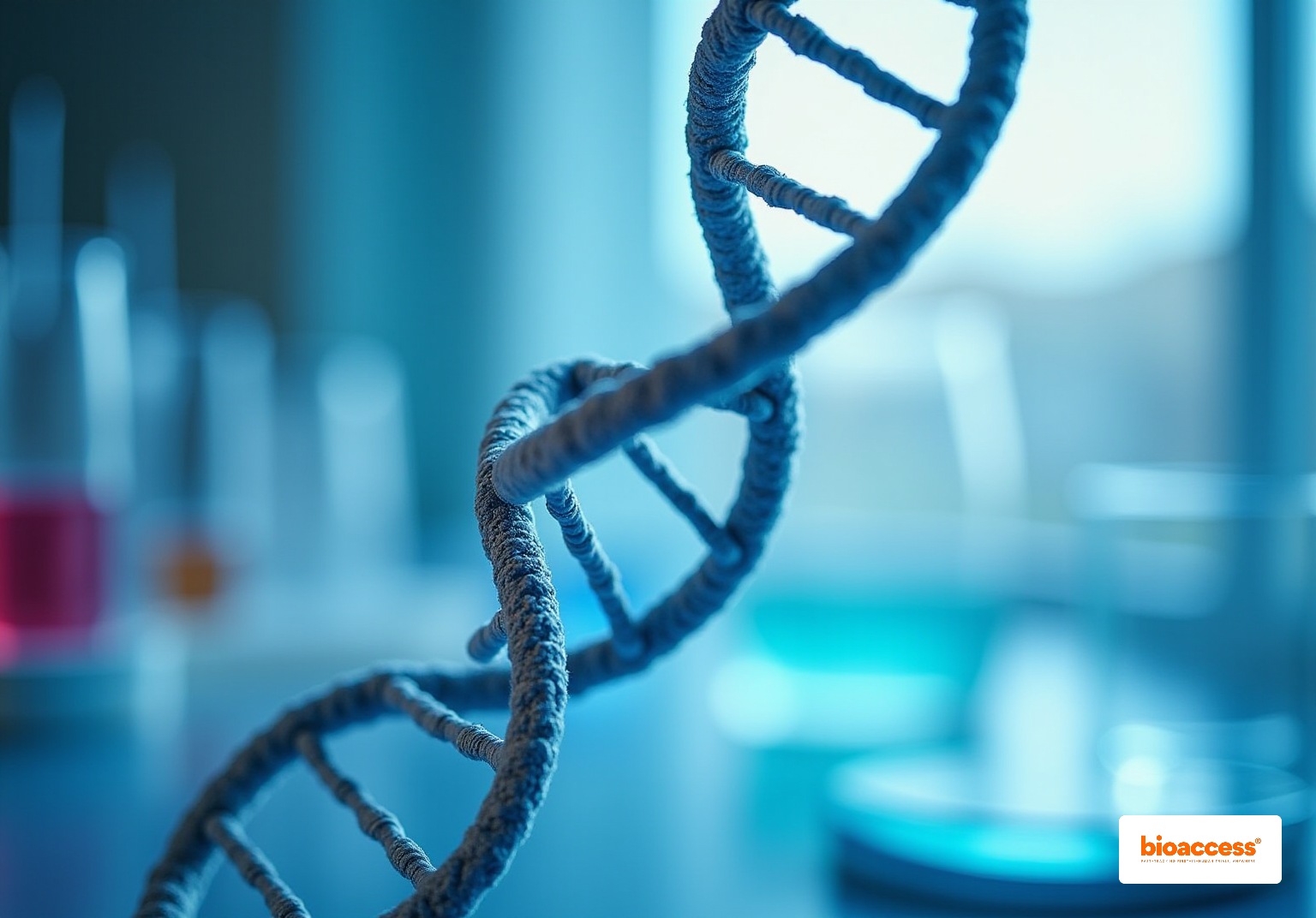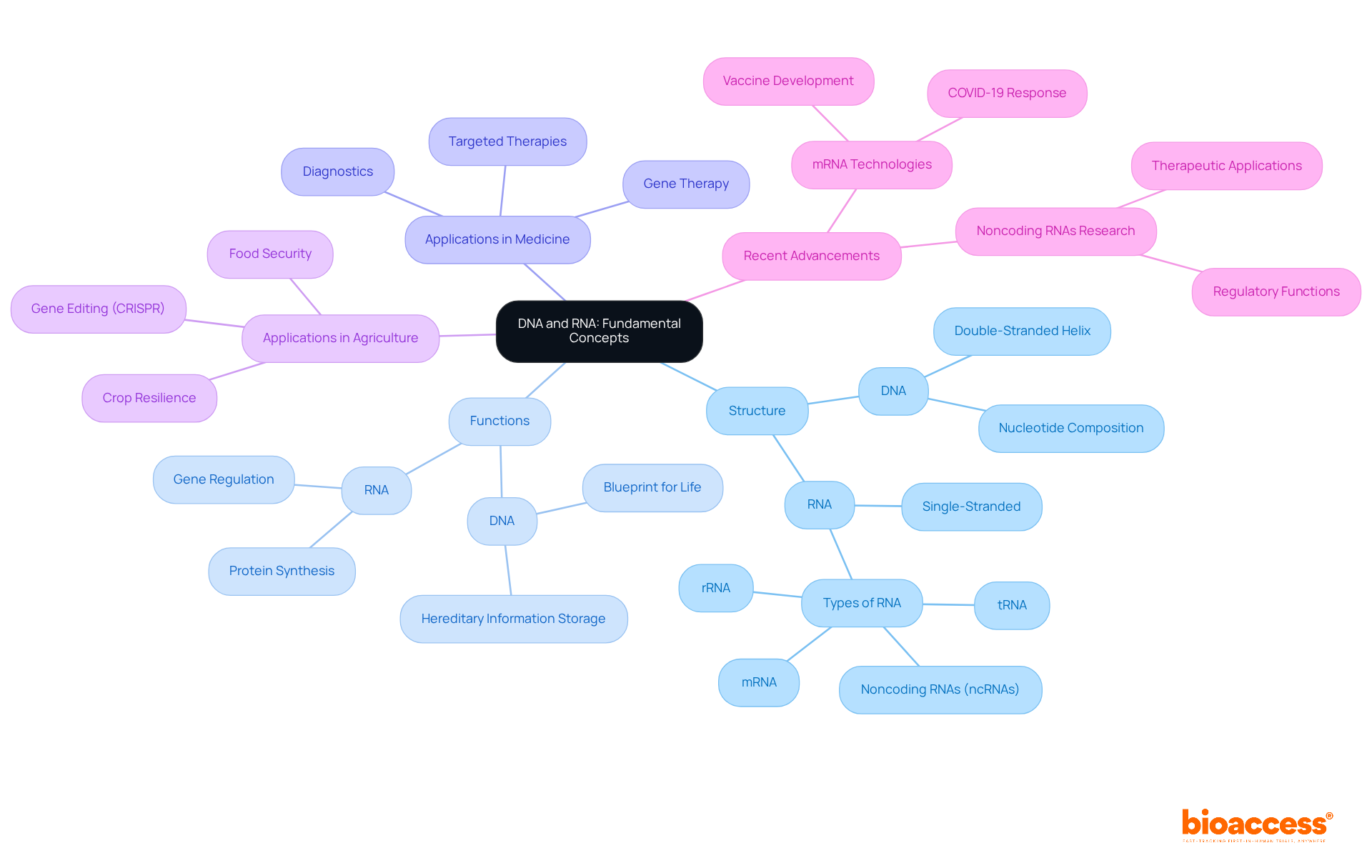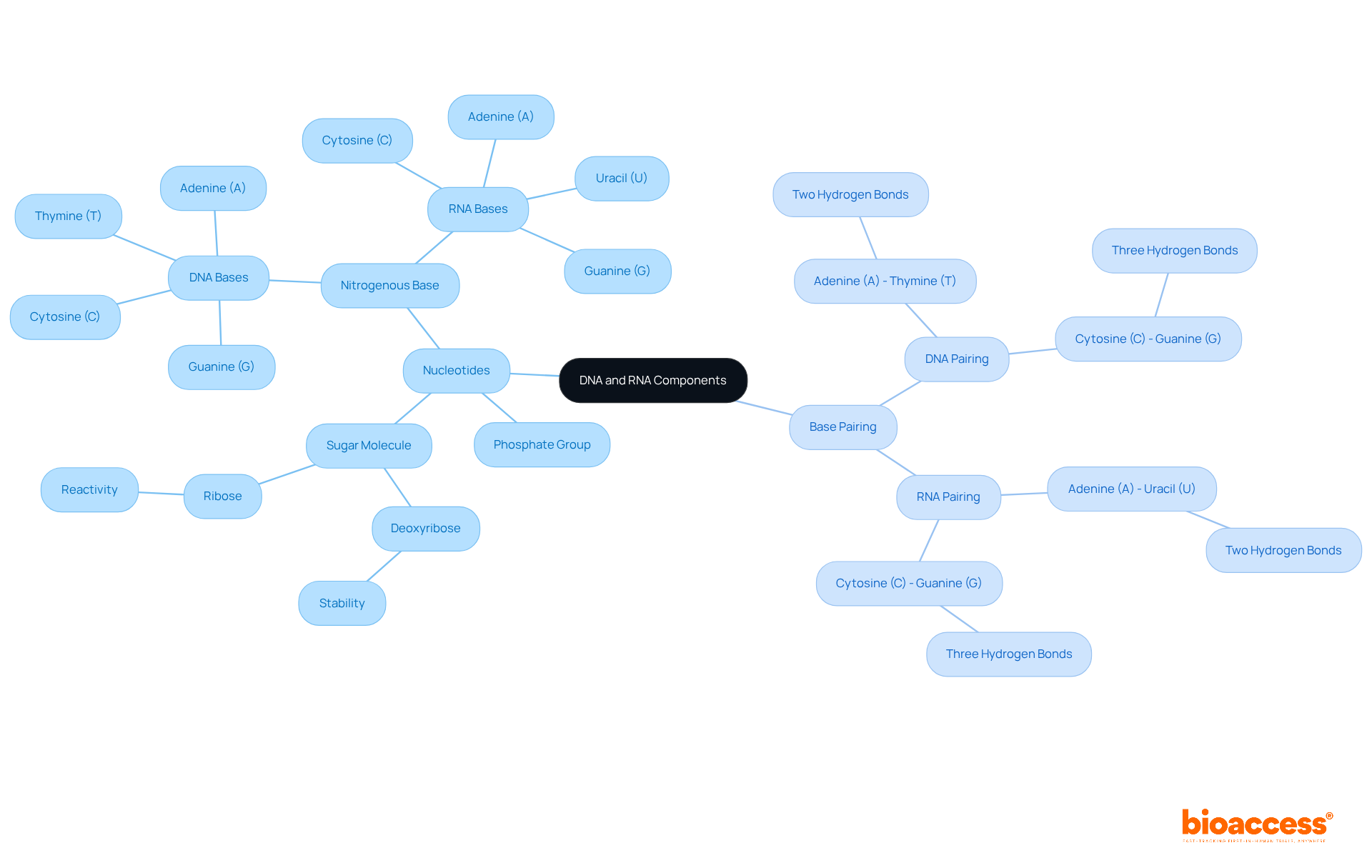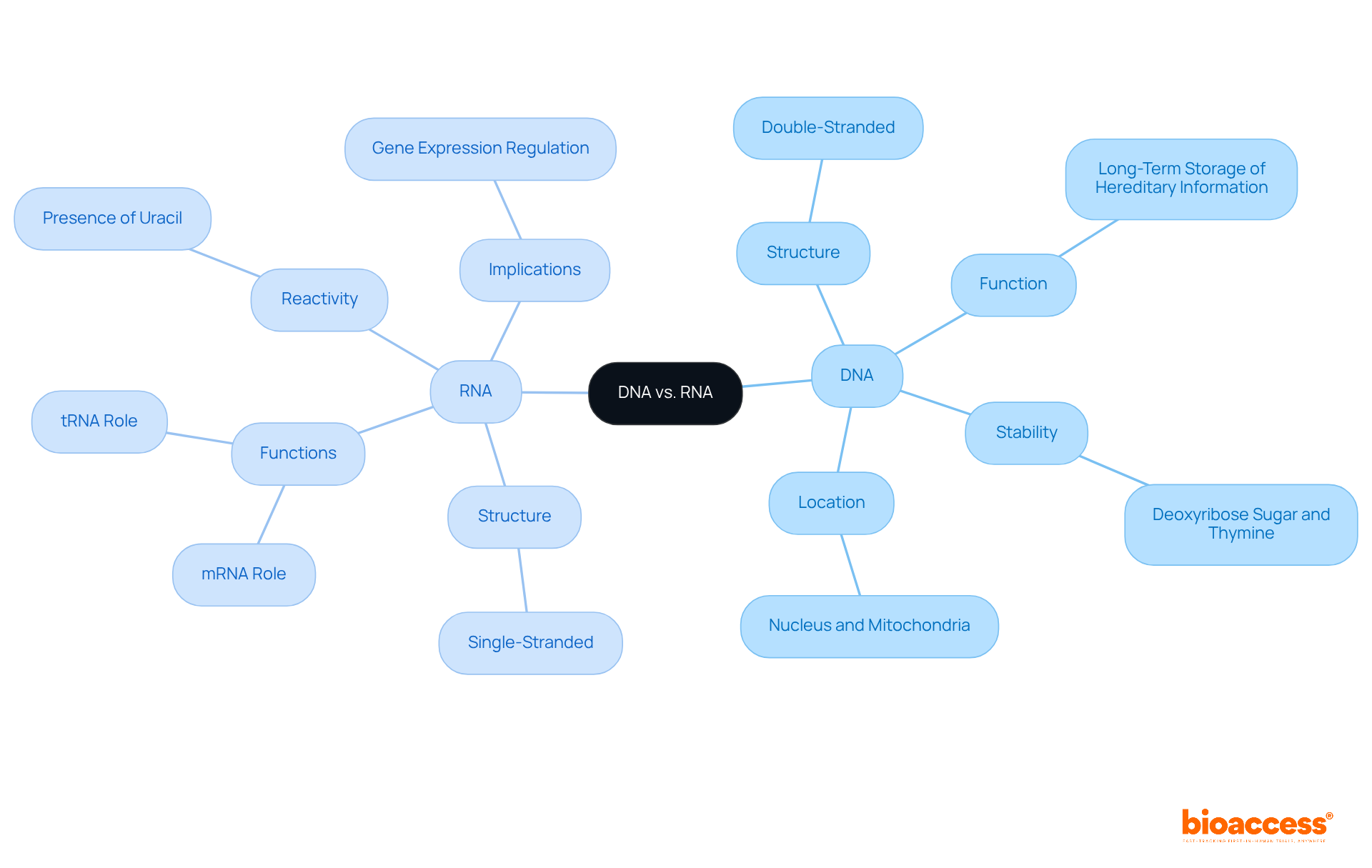


DNA and RNA are fundamentally composed of nucleotides, which include a phosphate group, a sugar molecule—deoxyribose in DNA and ribose in RNA—and a nitrogenous base, with thymine present in DNA and uracil in RNA. This article illustrates how these essential components contribute to the distinct structures and functions of DNA and RNA. Their roles in genetic inheritance and protein synthesis are not merely academic; they are crucial for the continuity of life itself. Understanding these processes is vital for anyone engaged in the field of clinical research.
The intricate world of genetics is anchored by two fundamental molecules: DNA and RNA. These nucleic acids serve not only as the blueprints of life but are also composed of unique building blocks that dictate the very essence of biological functions. By delving into their core components, readers can uncover how these molecules operate, their distinct roles in heredity, and their implications in groundbreaking biotechnological advancements. However, with such complexity arises a pivotal question: how do the structural differences between DNA and RNA influence their functions and stability in the ever-evolving landscape of life?
To understand the crucial functions of DNA (deoxyribonucleic acid) and RNA (ribonucleic acid) in the storage and expression of hereditary information, it is important to explore what DNA and RNA are made of. DNA, a double-stranded helix, contains the essential instructions for the development, functioning, growth, and reproduction of all known living organisms and many viruses. It serves as the blueprint for life, encoding the hereditary instructions utilized in the development and functioning of all living entities. Conversely, RNA is typically single-stranded and plays multiple roles in converting the information from DNA into proteins, which are indispensable for cellular activities. Understanding these molecules is essential, as they are fundamental to genetics, molecular biology, and biotechnology, impacting fields such as medicine, agriculture, and forensic science.
Recent advancements in DNA and RNA research underscore their transformative potential in biotechnology. For example, the emergence of mRNA technologies has revolutionized vaccine development, particularly highlighted during the COVID-19 pandemic, where mRNA vaccines demonstrated rapid efficacy and adaptability. Ongoing studies suggest that noncoding RNAs (ncRNAs) may outnumber protein-coding genes by a factor of three, revealing a vast, unexplored area of regulation that could lead to novel therapeutic applications.
In medicine, understanding what DNA and RNA are made of is pivotal for developing targeted therapies and diagnostics. For instance, alterations in ncRNA regulation are linked to various illnesses, including cancers and hereditary disorders. In agriculture, advancements in gene editing technologies, such as CRISPR, leverage the understanding of DNA and RNA to enhance crop resilience and yield, addressing food security challenges.
As research progresses, the implications of DNA and RNA in biotechnology continue to expand, offering new avenues for innovation in healthcare and agriculture. This ultimately enhances our understanding of biological processes and improves human health.

To answer the question of what are DNA and RNA made of, they are fundamentally composed of nucleotides, the essential building blocks of these nucleic acids. Each nucleotide consists of three key components:
In DNA, the sugar is deoxyribose, which lacks a hydroxyl group on the 2' carbon, contributing to its stability. In contrast, RNA contains ribose, which has a hydroxyl group at the same position, making it more reactive. The nitrogenous bases in DNA include adenine (A), thymine (T), cytosine (C), and guanine (G), while RNA substitutes uracil (U) for thymine, resulting in adenine (A), uracil (U), cytosine (C), and guanine (G).
The specific pairing of bases—adenine with thymine in DNA and adenine with uracil in RNA—is crucial for the stability and functionality of these molecules, as it ensures precise encoding of information. Chargaff's rules, which indicate that the quantity of adenine matches thymine (A = T) and the quantity of cytosine corresponds to guanine (G = C), further emphasize the importance of base pairing in preserving the integrity of hereditary information. Recent studies continue to explore the intricate structures and functions of nucleotides, shedding light on their roles in heredity research and the broader implications for biotechnology and pharmaceuticals.
As Erwin Chargaff noted, "The structure and interactions of nucleotides contribute to the stability and functionality of DNA and RNA." Comprehending these elements is essential for understanding what DNA and RNA are made of and how they function within the cell, affecting everything from protein synthesis to hereditary regulation.

Understanding what DNA and RNA are made of reveals their distinct characteristics in structure, function, and stability, which are pivotal in clinical research.
DNA, with its double-stranded helical structure, serves as a long-term storage medium for hereditary information, ensuring stability through its deoxyribose sugar and thymine base. This stability is crucial for preserving hereditary integrity, as DNA is tightly coiled and stored in the nucleus, with some also present in mitochondria.
In contrast, RNA is typically single-stranded, granting it greater versatility in cellular functions. This structural distinction enables RNA to fulfill various roles, including:
Recent research highlights that the presence of uracil in RNA, replacing thymine found in DNA, contributes to its reactivity and shorter lifespan, making RNA less stable but more adaptable for rapid cellular responses. This instability has significant implications for gene expression regulation, allowing for dynamic control in cellular processes.
These fundamental differences underscore the critical roles both molecules play in replication, transcription, and translation, emphasizing their importance in the continuity of life and the advancement of genetic research.

Understanding the composition of DNA and RNA is fundamental to grasping their essential roles in genetics and molecular biology. These two nucleic acids are not merely strands of genetic material; they are intricate structures composed of nucleotides that dictate the blueprint for life. DNA serves as the stable repository of hereditary information, while RNA acts as a versatile messenger and facilitator in the protein synthesis process. Together, they form the backbone of biological information transfer and expression.
The article delves into the key components of DNA and RNA, highlighting the differences in their structures, such as the presence of deoxyribose in DNA and ribose in RNA, as well as the unique nitrogenous bases that define each molecule. It emphasizes how these structural differences contribute to their distinct functions, from DNA's role in long-term genetic storage to RNA's involvement in dynamic cellular processes. Furthermore, advancements in biotechnology, particularly in mRNA technology and gene editing, illustrate the practical applications of understanding these nucleic acids.
Ultimately, the significance of DNA and RNA extends beyond their molecular composition; they are pivotal in advancing fields such as medicine and agriculture. As research continues to uncover the complexities of these molecules, it becomes increasingly clear that a deeper understanding of their roles can lead to groundbreaking innovations. Engaging with the intricacies of DNA and RNA not only enriches knowledge in genetics but also empowers future developments that can enhance human health and address global challenges.
What are DNA and RNA?
DNA (deoxyribonucleic acid) is a double-stranded helix that contains the instructions for the development, functioning, growth, and reproduction of all known living organisms and many viruses. RNA (ribonucleic acid) is typically single-stranded and plays multiple roles in converting the information from DNA into proteins, which are essential for cellular activities.
What is the primary function of DNA?
The primary function of DNA is to serve as the blueprint for life, encoding the hereditary instructions utilized in the development and functioning of all living entities.
How does RNA contribute to cellular activities?
RNA contributes to cellular activities by converting the information from DNA into proteins, which are indispensable for various cellular functions.
Why is understanding DNA and RNA important?
Understanding DNA and RNA is crucial as they are fundamental to genetics, molecular biology, and biotechnology, impacting fields such as medicine, agriculture, and forensic science.
What recent advancements have been made in DNA and RNA research?
Recent advancements include the emergence of mRNA technologies, which have revolutionized vaccine development, especially during the COVID-19 pandemic. Additionally, ongoing studies suggest that noncoding RNAs (ncRNAs) may outnumber protein-coding genes, indicating a vast area of regulation that could lead to novel therapeutic applications.
How are DNA and RNA relevant in medicine?
In medicine, understanding DNA and RNA is pivotal for developing targeted therapies and diagnostics, as alterations in ncRNA regulation are linked to various illnesses, including cancers and hereditary disorders.
What role do DNA and RNA play in agriculture?
In agriculture, advancements in gene editing technologies, such as CRISPR, leverage the understanding of DNA and RNA to enhance crop resilience and yield, addressing food security challenges.
What are the implications of ongoing research in DNA and RNA?
Ongoing research in DNA and RNA continues to expand their implications in biotechnology, offering new avenues for innovation in healthcare and agriculture, ultimately enhancing our understanding of biological processes and improving human health.